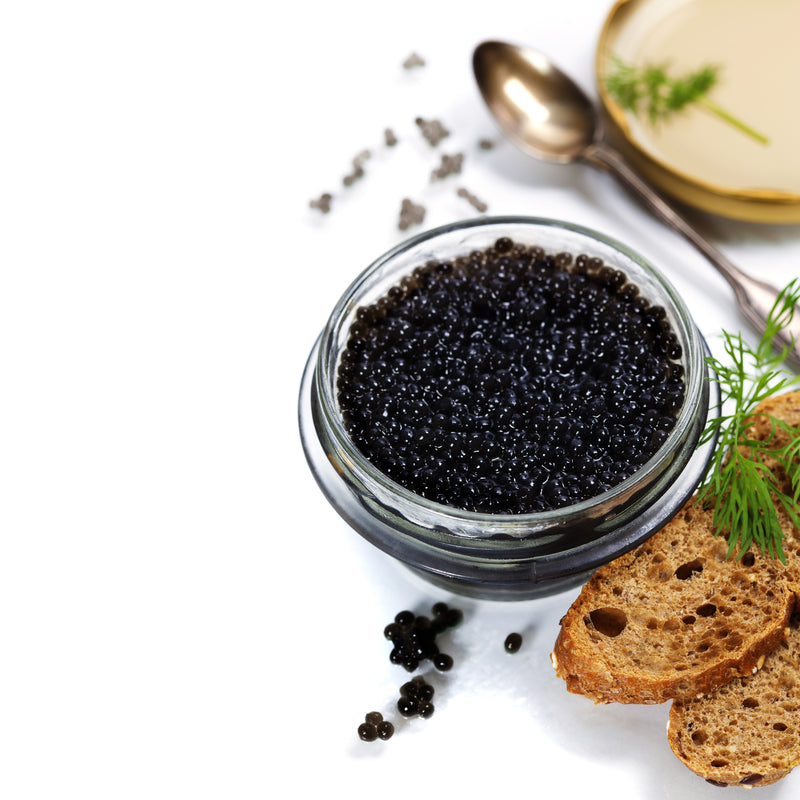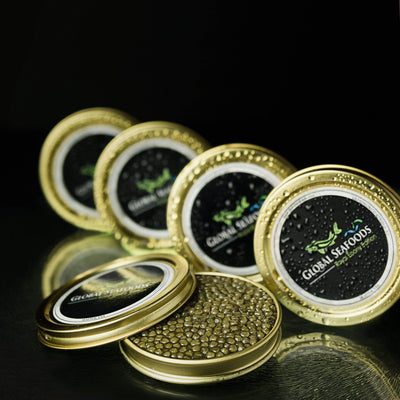How to Make Sturgeon Caviar at Home: Step-by-Step Guide for Beginners

Make Sturgeon Caviar at Home: A Beginner’s Guide
Sturgeon caviar is the epitome of luxury, and while store-bought options often come with a hefty price tag, making your own DIY sturgeon caviar at home is easier than you think. This guide will help you craft high-quality, flavorful caviar using simple ingredients and straightforward steps.
Whether you’re looking to save money, experiment with custom flavors, or simply enjoy the satisfaction of making gourmet caviar at home, this detailed guide covers everything you need to know.
Why Choose Sturgeon Caviar?
Sturgeon caviar, sourced from fish like Beluga, Osetra, and Siberian sturgeon, is renowned for its:
- Luxurious Flavor: Smooth, buttery, and subtly briny.
- Rich Nutrients: High in protein, Omega-3 fatty acids, and essential vitamins.
- Versatility: Perfect for both traditional recipes and modern culinary experiments.
Pro Tip: Purchase fresh or frozen roe from reputable suppliers to ensure the best results. Explore Global Seafoods for premium-quality sturgeon roe.
Step-by-Step Guide to Making Sturgeon Caviar
Step 1: Source Fresh Sturgeon Roe
High-quality roe is the foundation of great caviar. Look for fresh, firm eggs with a natural sheen. Trusted sources include specialized fish markets and online retailers.
Shop premium sturgeon roe at Global Seafoods.
Step 2: Rinse and Clean the Roe
- Place the roe in a fine-mesh sieve.
- Rinse gently under cold running water to remove impurities.
- Carefully pick out any membranes or debris without breaking the eggs.
Tip: Handle the roe delicately to maintain the integrity of the eggs.
Step 3: Prepare the Brine
Classic Brine Recipe
- 1 gallon of cold water
- 1 cup of non-iodized salt
Mix the salt into the water until fully dissolved. The brine should taste slightly salty, like seawater.
Optional Add-Ins: For a unique flavor, infuse the brine with herbs (e.g., dill, rosemary) or spices (e.g., garlic, peppercorns).
Step 4: Brine the Roe
- Submerge the cleaned roe in the prepared brine.
- Stir gently to coat the eggs evenly.
- Allow the roe to soak for 10–15 minutes, depending on your desired saltiness.
Pro Tip: Taste-test the roe halfway through to ensure the salt level suits your preference.
Step 5: Rinse and Dry the Roe
- Remove the roe from the brine and rinse thoroughly under cold water.
- Spread the roe on a clean kitchen towel.
- Gently pat dry to remove excess moisture.
Step 6: Store the Caviar
- Place the roe in an airtight, non-metallic container.
- Refrigerate for at least 24 hours to let the flavors mature.
Storage Tip: Keep homemade caviar at 28–32°F for maximum freshness. Consume within two weeks.
Creative Ways to Serve Homemade Caviar
Your homemade sturgeon caviar is a versatile ingredient that can elevate any meal.
1. Classic Blini with Crème Fraîche
Serve caviar on small, warm blinis with a dollop of crème fraîche for a traditional Russian touch.
2. Caviar-Topped Oysters
Add a spoonful of caviar to fresh oysters for a decadent appetizer.
3. Caviar Pasta
Toss caviar into creamy pasta with lemon zest and fresh herbs for a gourmet entrée.
4. Avocado Toast with Caviar
Upgrade your brunch with caviar-topped avocado toast.
Find inspiration for more seafood recipes on the Global Seafoods YouTube Channel.
Health Benefits of Sturgeon Caviar
Homemade sturgeon caviar is not just delicious—it’s packed with nutrients:
- Omega-3 Fatty Acids: Support heart health and reduce inflammation.
- Protein: Helps with muscle repair and overall energy.
- Vitamins and Minerals: Includes Vitamin B12, selenium, and iron, which boost immunity and metabolism.
FAQs About Making Sturgeon Caviar at Home
1. Can I Use Table Salt for the Brine?
No. Use non-iodized salt to preserve the roe’s natural flavor and texture.
2. How Long Does Homemade Caviar Last?
Properly stored homemade caviar lasts up to two weeks in the refrigerator.
3. Can I Use Roe from Other Fish?
Yes, roe from paddlefish, salmon, or trout can also be used for different caviar flavors. Try Paddlefish Caviar for a unique alternative.
4. Is Making Caviar at Home Safe?
Absolutely. As long as you maintain cleanliness and use fresh roe from a reliable source, the process is safe.
5. Can I Freeze Homemade Caviar?
Freezing is not recommended as it can affect the texture. Always prepare small batches to enjoy fresh.
Conclusion: A Gourmet DIY Adventure
Making sturgeon caviar at home is an exciting way to indulge in luxury while saving money. By following this step-by-step guide, you can create high-quality caviar tailored to your taste. From sourcing fresh roe to serving creative dishes, the process is as rewarding as the final product.
Ready to start? Find premium sturgeon roe and other caviar varieties at Global Seafoods.
Watch more seafood recipes and tutorials on our YouTube channel: Global Seafoods YouTube Channel.
Also in News

Columbia River Steelhead | Life Cycle, Conservation & Facts
Columbia River steelhead are one of the most resilient salmonid species, embarking on an incredible migration from freshwater to the ocean and back. Learn about their spawning habits, juvenile development, oceanic journey, and conservation efforts. Discover why steelhead are a prized fish for both anglers and seafood lovers.

Mastering Dover Sole: Cooking & Serving Guide for a Gourmet Experience
Dover Sole is a culinary delight known for its mild flavor and tender texture. Whether you're pan-frying for a crispy finish, baking for a healthy meal, or grilling for a smoky touch, this guide provides expert tips on preparing, cooking, and serving Dover Sole. Elevate your seafood dishes and enjoy gourmet flavors at home.

Cocktail Caviar Pairings: Best Drinks to Complement Exquisite Caviar
Pairing caviar with the right cocktail enhances both flavors, turning any occasion into an indulgent experience. Learn expert tips on pairing champagne, martinis, Moscow mules, and more with the perfect caviar selection.

